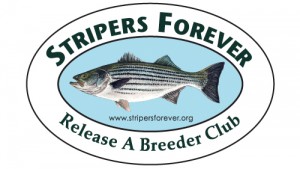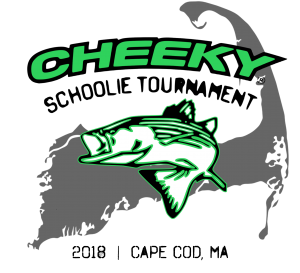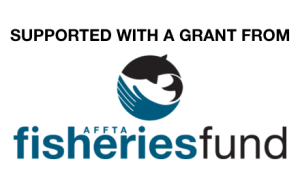ASMFC ACCEPTING COMMENTS ON EEL MANAGEMENT
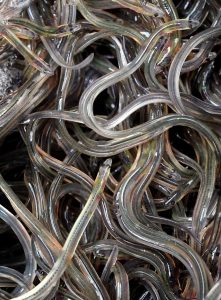
Here is your chance to speak up for the health of our marine ecosystem and favorite striped bass food! We need to make sure that the harvest levels remain the same and NOT increased so that a few may profit! The Atlantic States Marine Fisheries Commission (ASMFC) is seeking public comment on its plans to make changes to its American Eel Fishery Management Plan (FMP) for commercial yellow and glass/elver eel allocation and management.
This is an important opportunity for the public to ask for increased eel conservation. By entering your information we will send a letter to your appropriate representative in support of increased eel conservation. You will receive a copy of this conversation and a copy of the letter sent via email.
Please share with a friend. We only have until June 15, 2018 to make our voice heard.
Thanks!
RETURN TO OUR HOMEPAGE AND LOOK FOR THE EEL IN THE LOWER LEFT HAND CORNER. THE FOLLOWING LETTER WILL BE SENT TO THE ASMFC ON YOUR BEHALF.
Dear ASMFC-
According to the U.S Fish and Wildlife Service, in all its life stages, the American eel serves as an important prey species for many fish, aquatic mammals, and fish-eating birds. Climate change may affect future ocean conditions, such as water temperature, current patterns and food sources that may have implications for the eels breeding success. However, high levels of uncertainty in the precise mechanism and timing of such changes make it difficult for scientists to accurately predict how, or to what extent, any changes will affect eel migration, aggregation for reproduction, and ultimately abundance.
According to the ASMFC, The goal of the current American Eel FMP is to conserve and protect the American eel resource to ensure its continued role in its ecosystems. This FMP requires that states and jurisdictions maintain existing or more conservative American eel commercial fishery regulations for all life stages, including minimum size limits. Each state is responsible for implementing management measures within its jurisdiction to ensure the sustainability of its American eel population.
However, the 2012 benchmark stock assessment results indicated that the American eel stock had declined, that there were significant downward trends in multiple surveys across the coast, and that the stock was depleted. And, the 2017 assessment update repeated the 2012 finding that the American eel population is depleted.
In addition to the depleted stock status, the total coast wide yellow eel landings from 2011-2016 exceeded the coast wide cap in 5 out of 6 years. And, there are significant uncertainties in the commercial landings data because not all states comply with the required data reporting, and there are potential biases present in the commercial yellow eel data set because even with mandatory reporting, requirements do not always extend outside marine districts where yellow eel are harvested from non-marine waters, and misreporting between conger eel, hagfish, slime eel, and American eel has been known to occur.
Regarding the current elver harvest, given an estimated 2,000 elvers per pound, the current Maine quota of 9,688 pounds combined with the 15 states aquaculture quota of 200 pounds each would yield a total coast wide quota of 12,688 pounds, or a potential to remove 25,376,000 eels from the water, in addition to the total yellow ells removed under the current coast wide quota of 907,671 pounds.
To achieve the conservation goals of the ASMFC’s American Eel Fishery Management Plan through Addendum 5, we feel the following Addendum V options should be implemented:
3.1 Proposed Options for Maine Glass Eel Quota: Option 1: Status Quo Quota for Maine of 9,688 pounds of glass eel.
3.2 Proposed Options of Glass Eel Aquaculture Plans: Option 1: Status Quo.
3.3 Proposed Options for Yellow Eel Coast wide Cap, Management Trigger, and State-by-state Allocations:
Issue 1: Coast wide Cap: Option 4: Coast wide Cap set at 836,969 pounds; a 12% decrease from the mean or average of 1998-2016 landings.
Issue 2: Management Trigger: Option 1: Status QuoThere are also numerous allocation options in Addendum V, but the main options to maintain or increase protections for American Eel are the ones noted above.
Thank you for the opportunity for concerned anglers like me to submit comment!
Your contact info will go here.
AFFTA, Cheeky team up to support Stripers Forever
The American Fly Fishing Trade Association and Cheeky Fishing are partnering to award a donation of up to $3,000 to Stripers Forever in coordination with the Cheeky Schoolie Tournament being held this May.
As a sponsor of this year’s tournament, AFFTA has agreed to donate $1 for every 5-inches of striped bass caught, released and recorded, up to $1,500. Cheeky has stepped up to match that amount dollar-for-dollar, with the total amount going to the conservation of wild striped bass. Prize money is awarded each year to the winning teams, but this is the first year that a formal donation of this sort is being made.

Photo Credit: The Flylords
“We couldn’t be more excited to support this event, and further, to support Stripers Forever and the value of releasing a fish,” says Ben Bulis, president of AFFTA. “With all the growth in saltwater fly fishing, more people are realizing the importance of healthy marine fisheries. Tournaments like this lead by example.”
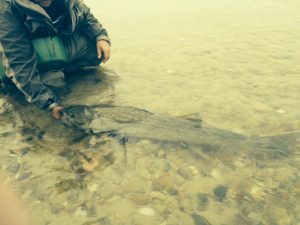
Photo Credit: Paul Restuccia
“We’re proud to join AFFTA in support of an organization that’s doing so much to conserve and protect our hard-working schoolie stripers,” adds Ted Upton, owner of Cheeky Fishing. “Our donation, and SF’s dedication, will add new value to every fish caught and released at this year’s Schoolie Tourney, and for seasons to come.”
“We can’t thank AFFTA and Cheeky enough for considering us for this,” says Brad Burns, President of Stripers Forever. “We were founded on the concept that with striped bass the greatest value to the most people in our society comes from the activity of fishing—and our Release A Breeder Club’s central goal is catch-and-release. The principles align perfectly.”
About the Cheeky Schoolie Tournament:
Known as the largest, catch and release fly fishing-only tournament in the world, the Cheeky Schoolie Tournament is set to mark its 7th year on May 19th on Cape Cod, MA. With over 400 anglers registered this year from all over the U.S. and internationally, the tournament is already sold out and a waitlist has been created.
Anglers are only eligible to compete from shore or wading (no watercraft of any sort are allowed), so the tournament is a low-barrier-to-entry, grassroots style event focused on encouraging interest and participation in saltwater fly fishing. Learn more at cheekyfishing.com
Click here for the full press release from AFFTA.
2017 Annual Angler Survey Results
The results of the Stripers Forever 2017 Annual Fishing Survey are finalized. In 2016 we received 504 responses to our annual survey. This year’s survey has again produced a good representative sampling of sentiments from fishers all along the striper’s migratory range, and as usual MA and NJ vied for the greatest contributions with 123 and 127 completed surveys respectively.
2017 saw a tiny uptick in angler catch statistics. Only 64% of anglers said that they caught fewer or many fewer stripers compared to 66% in 2016 and 82% in 2015. Overall angler sentiment was still quite negative, but it is clear from the responses that the increased numbers of smaller fish found here and there along the coast in 2016 and 2017 was welcome.
77%, however, said they were catching smaller fish compared to 66% for 2016 and 73% for 2015. This is not an unexpected development as while we are seeing an increase in small stripers, especially in the northern states, there are less big fish in the population. Year classes over the last 10 years have not been nearly as consistently good as they were in the 1990s and early 2000s, and with harvest levels reduced very little from their highs big stripers may become even harder to locate.
Answers to questions about the need for a slot limit allowing smaller-sized stripers, and what percentage of the current commercial quotas should be reallocated to recreational quotas, show that our members continue to believe we should not be harvesting large, breeding stripers, and that they want to set aside a high percentage of the current commercial catch for conservation – and not harvest it themselves. Because of the need to fit a large, commercial quota into the overall striped bass plan regulators must suppress angler harvest. Regulators do that by adopting a high recreational minimum size like 28 inches so that most anglers will not be able to catch a keeper very often. It is a ridiculous example of public policy.
82% of our members – up slightly from 77% in 2016 – said that they are willing to buy a stamp to finance the buyout of the commercial fishery.
We had survey results from only 48 guides, down from 64 in 2016. Without a doubt the decline in striper fishing is hurting this valuable industry as well as the related fishing tourism and tackle businesses. The guides know how to fish their areas, though, and can usually produce the best results possible from their home waters. If you are thinking about a guided trip please check out the guides and tackle shops listed on the Stripers Forever website. Last winter we called all the guides on the list and removed those that we could find who had dropped out of the business. We are always adding new ones and welcome new applications. To get on the SF guides and tackle shop list just send us an e-mail at: stripers@stripersforever.org.
We will send this information to the press and fishery policy makers everywhere. We hope that you will use this information personally to help us advocate for the goal of coast-wide striped bass game fish. Please share the results with your local fishing club, home town newspaper, and elected officials that you may know.
Full Survey Results (PDF)
- 2017 Annual Angler Survey- Full Results (PDF)
- 2017 Annual Angler Survey- Full Results (SURVEY MONKEY GRAPHS) (PDF)
- 2017 Annual Angler Survey- Question 19: Comments on Current Management of Fishery (PDF)
- 2017 Annual Angler Survey- Question 26: Guide Comments on How Management of Fishery Effects Business (PDF)
- 2017 Annual Angler Survey- Key Comparisons 2003-2017 (PDF)
If you have any questions about the survey please don’t hesitate to e-mail us at stripers@stripersforever.org
Lefty Kreh Bronze Belt Buckle Fundraiser
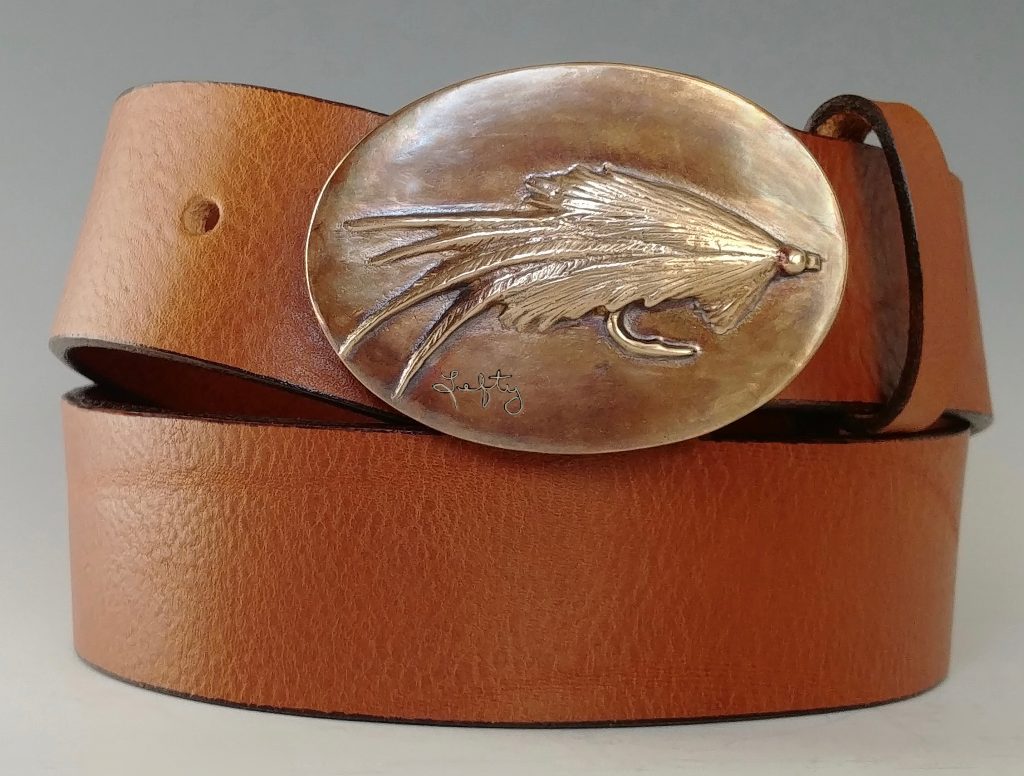 Taf Schaefer Design, in concert with fly fishing legend Lefty Kreh and the not-for-profit conservation organization Stripers Forever, announces a fund-raising project with the issuance of a bronze belt buckle featuring a sculpted version of the world renowned “Lefty’s Deceiver” fly. The buckle, crafted by well-known designer/sculptor Taf Schaefer, has been fully endorsed and signed by Lefty Kreh, the father of fly fishing and creator of the original Deceiver Fly.
Taf Schaefer Design, in concert with fly fishing legend Lefty Kreh and the not-for-profit conservation organization Stripers Forever, announces a fund-raising project with the issuance of a bronze belt buckle featuring a sculpted version of the world renowned “Lefty’s Deceiver” fly. The buckle, crafted by well-known designer/sculptor Taf Schaefer, has been fully endorsed and signed by Lefty Kreh, the father of fly fishing and creator of the original Deceiver Fly.
In the summer of 2016 when Lefty was first asked if he would like to be involved in the “Lefty’s Deceiver Buckle” project his response was, “I am both humbled and grateful that people throughout my life have been kind and helpful. I try to give back and will be flattered to help out.”
Schaefer’s buckle design was inspired by the Deceiver Fly personally tied by Lefty in 2016 and sent to the highly respected artist Sam Aronson as the model for an original painting sold at auction to raise funds for striped bass conservation. The painting, a huge success, spawned the idea of creating a limited edition, signed bronze “Lefty’s Deceiver” buckle.
Taf Schaefer, the acclaimed designer/sculptor whose work is collected worldwide (see bio below) was chosen to design the Deceiver buckle because of her reputation and expertise in creating custom belt buckles and her involvement in the conservation community. Together, Taf and Lefty have been working on the buckle design for more than a year. After the design was finalized and approved in the summer of 2017 Lefty authorized Taf to cast his signature on the face of 100 Limited Edition Deceiver buckles.
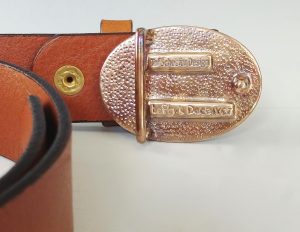
The signed, Limited Edition buckle with a leather strap, all made in the USA, is priced at $350.00 each. In addition to the signature “Lefty” on the front, Taf’s name will appear on the back along with the defining words “Lefty’s Deceiver” and the engraved edition number.
The Standard “Lefty’s Deceiver” buckle and belt, minus Lefty’s signature on the front but including the wording on the back is priced at $175.00. All sales channels will be utilized with the resulting net profits being dedicated to wild striped bass conservation.
Production casting is expected to begin after the first of the year. To pre-order and reserve your buckle please contact Taf directly at:
Signed, numbered buckles will be reserved on a first come basis.
Please see Taf Schaefer’s bio here:
Taf Schaefer was inspired by her early years on Cape Cod, where the freedom to explore the surrounding beaches and oceans created a personal nexus for her between art and science. Building on that inspiration Schaefer uses research and hands on modeling and carving to realize her designs. Accordingly, her work is highly collectable as evidenced by her position as the top selling designer at Steuben Glass for 15 plus years. Whether it’s carving stone, sculpting wax, designing glass or creating collectible belt buckles in silver, bronze and brass, Taf’s process involves an immersion in research, a drive to explore materials and taking on challenges that expand her horizons.
